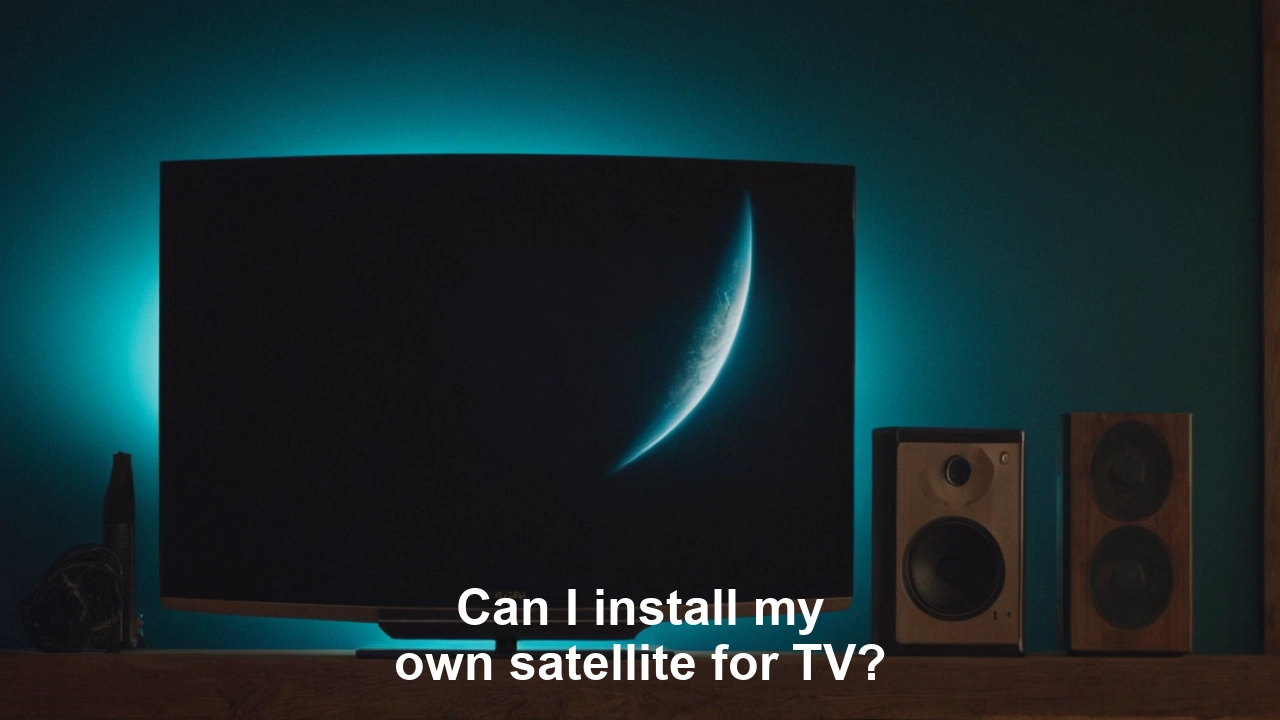Can I install my own satellite for TV?
With the rising costs of cable and satellite TV subscriptions, many people are looking for alternative ways to access television content. One question that often comes up is whether it's possible to install your satellite for TV. While the idea of having your satellite may sound appealing, the reality is more complex. In this blog post, we'll explore the feasibility of installing your satellite for TV, the challenges involved, and the alternative options available.
Understanding Satellite TV
Before diving into the possibility of installing your satellite, it's essential to understand how satellite TV works. Satellite TV relies on communication satellites in geostationary orbit around the Earth. These satellites transmit television signals to satellite dishes installed at homes and businesses. The dish captures the signal and sends it to a receiver, which decodes the signal and displays it on your TV.
Satellite TV providers like DIRECTV and DISH Network own and operate these communication satellites, which are strategically positioned to provide coverage to specific regions. These companies invest millions of dollars in launching and maintaining satellites, as well as securing licensing agreements for the channels they broadcast.
The Feasibility of Installing Your Satellite
Installing your communication satellite for TV is not feasible for several reasons:
-
High Costs: The cost of designing, building, launching, and maintaining a communication satellite is astronomical. It requires significant financial investment, technical expertise, and resources. Major satellite TV providers have the capital and infrastructure to support these operations, but for an individual, the costs would be prohibitive.
-
Regulatory Requirements: The launch and operation of communication satellites are heavily regulated by government agencies, such as the Federal Communications Commission (FCC) in the USA. These agencies ensure that satellites do not interfere with each other and that they comply with international regulations. Obtaining the necessary licenses and approvals to launch and operate your satellite would be a challenging and time-consuming process.
-
Technical Challenges: Designing, building, and launching a communication satellite requires advanced technical expertise and specialized equipment. It involves complex engineering, precise calculations, and coordination with space agencies. Even if you have the financial resources, the technical challenges would be daunting.
-
Ground Infrastructure: In addition to the satellite itself, you would need ground infrastructure to control and manage the satellite. This includes ground stations, tracking systems, and communication networks. Building and maintaining this infrastructure would add to the overall cost and complexity.
Alternatives to Installing Your Satellite
While installing your satellite is not feasible, there are several alternative options for accessing TV content without breaking the bank:
-
Satellite TV Providers: The most straightforward option is to subscribe to a satellite TV provider like DIRECTV or DISH Network. These providers offer a wide range of channels, including HD and international channels. They provide the necessary equipment, installation, and maintenance services, making it a hassle-free option.
-
Over-the-Air (OTA) Broadcasts: OTA broadcasts are a cost-effective way to watch TV for free. Local TV stations transmit their signals over the air, and you can receive them using a simple TV antenna. This option provides access to local news, sports, entertainment, and educational programming without any subscription fees.
-
Online Streaming Services: Several online streaming services offer free or low-cost TV content. Services like Pluto TV, Tubi, Crackle, and Peacock Free provide a wide range of shows, movies, and live TV channels without the need for a subscription. Additionally, many networks offer free access to their content through their websites and apps.
-
Public Access Channels: Public access channels, also known as community television, are available in many areas and provide free programming created by residents, organizations, and government entities. These channels often feature local news, community events, educational content, and more.
-
Cable TV: While cable TV may come with a subscription fee, many providers offer bundled services that include internet and phone, which can result in overall savings. Additionally, some providers offer basic cable packages at lower costs, providing access to essential channels.
-
Free Trials and Limited-Time Offers: Many subscription-based streaming services offer free trials and limited-time offers that allow you to watch TV for free for a certain period. This can be a great way to explore different services without committing to a subscription.
Conclusion
In conclusion, installing your satellite for TV is not a feasible option due to the high costs, regulatory requirements, technical challenges, and ground infrastructure needed. However, there are several alternative options available for accessing TV content without the need for a personal satellite.
Satellite TV providers offer a wide range of channels and hassle-free installation, while over-the-air broadcasts provide free access to local programming. Online streaming services, public access channels, and cable TV bundles offer additional options for enjoying TV content. By exploring these alternatives, you can find a solution that fits your budget and entertainment needs.
Whether you prefer the reliability of satellite TV providers or the cost-effectiveness of OTA broadcasts and online streaming, there are plenty of options to suit your preferences. So, while installing your satellite may not be practical, you can still enjoy a wide range of television content without breaking the bank.
Take your TV to the next level! Call (469) 213-7481 today for exclusive Satellite TV offers!


